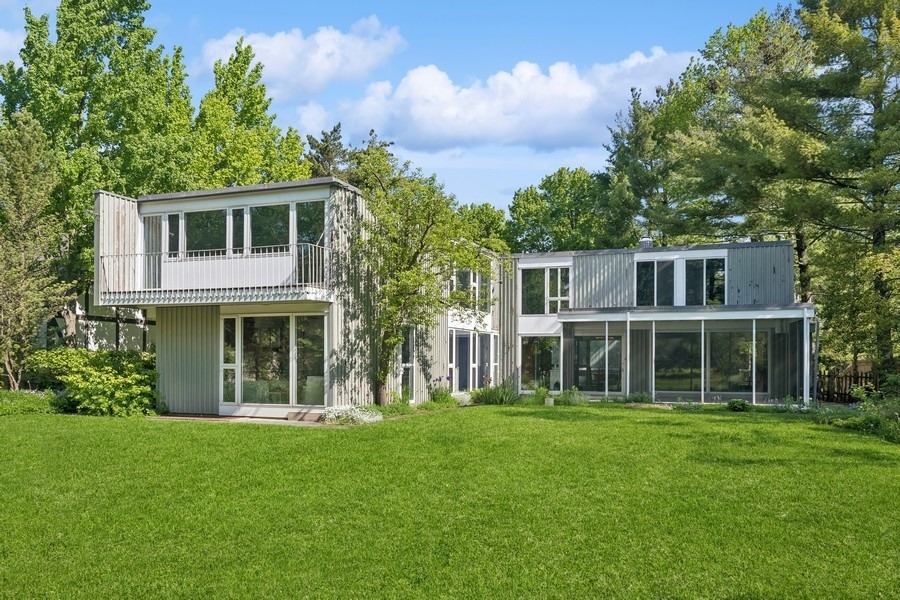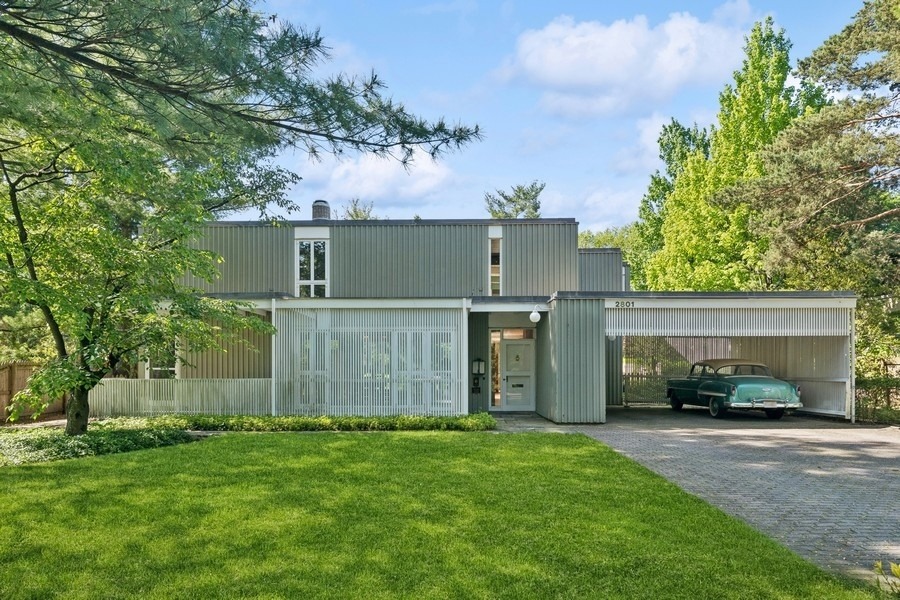For the first time since its construction 70 years ago, a modernist home designed by famed architect Harry Weese for his sister is now for sale. While he is best known for his large projects — including Chicago’s triangular Metropolitan Correctional Center and the circular Seventeenth Church of Christ, Scientist — along with his advocacy of historic preservation, Weese was no stranger to creating residential designs for his family. He designed a number of homes not only for himself but also for his parents, aunts, and siblings. In 1988, Weese told architectural historian Betty J. Blum, “That’s the only thing an architect can do when he starts out, because no one (except family) will trust him with anything bigger than that.”
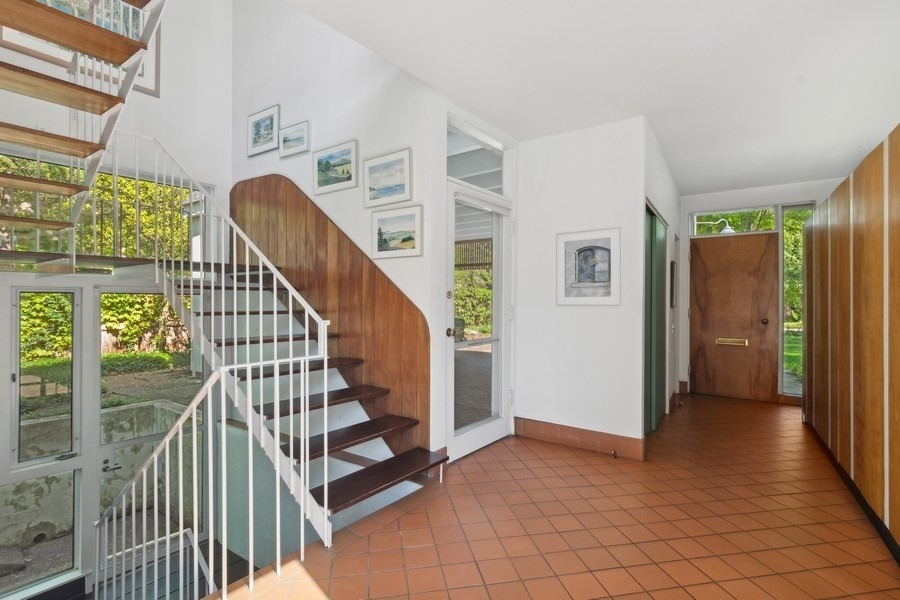
Weese’s sister, Suzanne, along with her then-husband, Robert Drucker, built this custom house in 1954 from Weese’s design. The board-and-batten design, set on half an acre in Wilmette, is priced similarly to other homes in the area at $1.6 million. The home is in the exclusive 170-acre subdivision of Indian Hill Estates, which was partially developed by Suzanne’s father-in-law, Henry W. Drucker, beginning in the 1920s. Architects were commissioned to design fashionable Tudor and Colonial Revival homes in the subdivision — but not Weese. Though Suzanne was concerned about how her traditionally minded neighbors might react, she soon found they were fine with the modern house.
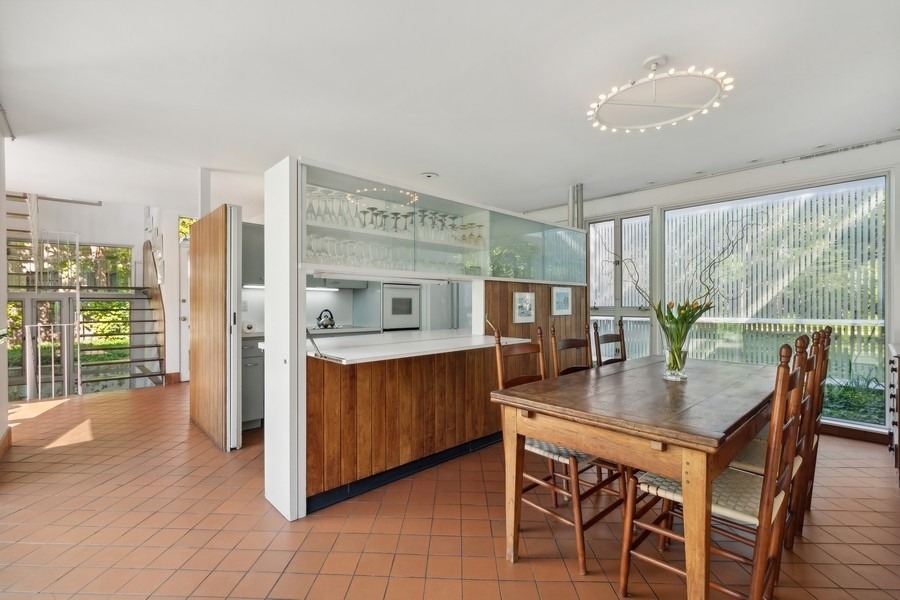
Throughout the design process, the siblings collaborated to create a functional and comfortable home that combined Weese’s main influences of International Style and Scandinavian architecture. The main exterior features minimal windows and slatted screens to ensure privacy. At just under 3,000 square feet, the five-bedroom, L-shaped residence features a light and airy interior filled with original materials. Some of the architect’s design elements include an open staircase, wood-paneled walls, and a double-sided fireplace — something he used in his own home in Barrington. Another interesting detail: The walls do not reach the ceiling, creating a sense of openness through the space.
Weese used passive solar design, with terra cotta flooring along with walls of south-facing windows to help capture heat from the sun. The galley kitchen has glass cabinets and a fold-down countertop that opens up to a screened courtyard. Another architect sibling, their brother Ben, designed a compatible second-floor addition in 1963 for the Druckers’ growing family. Several decades later, Weese was still advising his family on the maintenance of the future landmark.
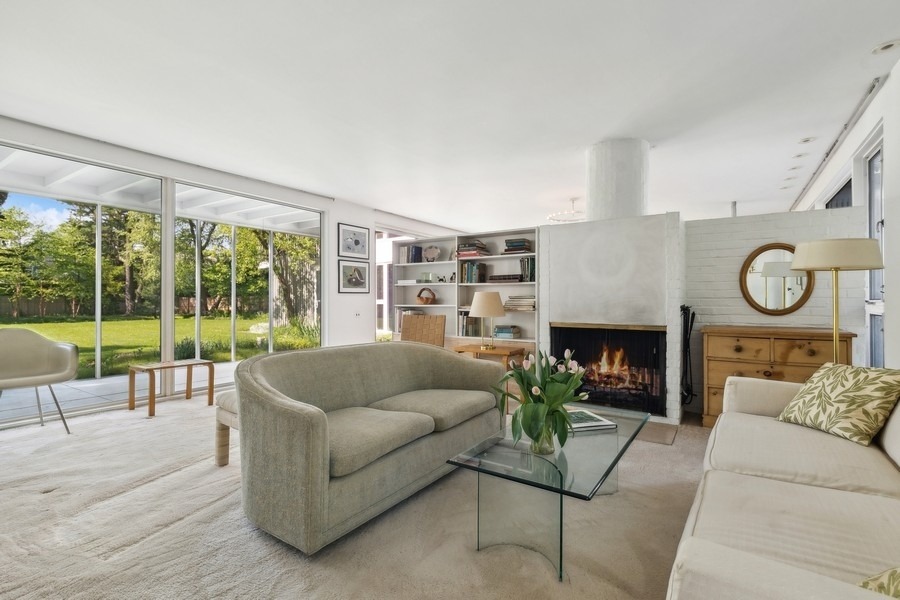
Though Harry Weese had a long career as an architect before his death in 1998, his lasting legacy will be as a preservationist. He saved and restored the Auditorium Building, predicted the resurgence of the South Loop as he bought and converted old industrial lofts in Printer’s Row, and led efforts to protect the city’s elevated train tracks from demolition. His brother Ben, who passed away last month, followed a similar path, founding what is now the Chicago Architecture Center in order to rescue the John J. Glessner House. Just like her brothers, Suzanne Drucker ensured the protection of her unique residence for future generations: The Wilmette house is an officially recognized local landmark and listed on the National Register of Historic Places. She resided here until her death last November at the age of 100. Six months later, her five children are selling it. Here’s hoping the new owners will appreciate its history and design as much as the Weese family did.
